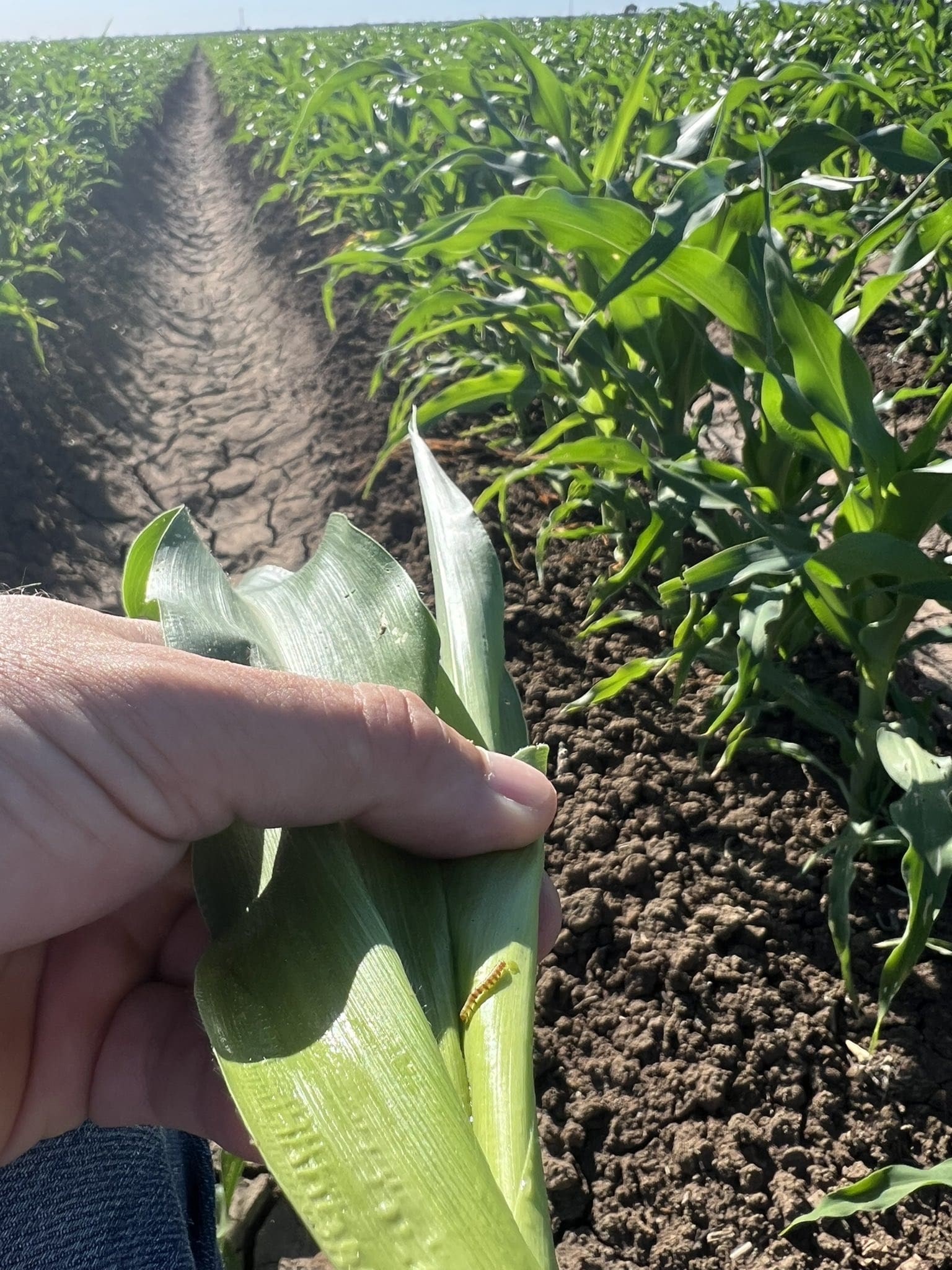
Fall armyworm has been attacking crops from Qld to Vic, including this corn crop in southern NSW. Photo: Barry Haskins
PRICES have plumbed new lows for the season as thin export demand allows values to sink in line with hefty falls overnight in futures values.
Domestic consumers are mostly out of the market on ample coverage which for many extends beyond June.
On the production side, growers across south-eastern Australia are planting grazing oats to open their winter-cropping program, and the sorghum harvest is getting close to its main window.
| Today | Feb 29 | |
| Barley Downs | $365 | $370 |
| ASW wheat Downs | $355 | $368 |
| Sorghum Downs | $350 | $352 |
| Barley Melbourne | $310 | $320 |
| ASW wheat Melbourne | $320 | $340 |
Table 1: Indicative prices in Australian dollars per tonne.
Sorghum inverse appears in north
Buying in the northern market in the past week has been confined largely to consumers booking sorghum to satisfy demand from the poultry sector.
A slow start to the sorghum harvest, the result of a small and patchy early plant back when conditions were dry in spring, has seen a premium develop for the front end of new crop.
Trade sources say sorghum for delivery in the next week of two is $8-$10/t above the main window in April-May, which is trading at around $350/t.
On the north-west slopes of New South Wales, Stewart Grain trader Robert Quinn said harvest pace is expected to increase in a fortnight, and some crops have been desiccated already.
“There was not a big initial early plant…and sorghum is short in the nearby,” Mr Quinn said.
Activity in the northern market is otherwise deathly quiet.
“Over the past two years, we’ve always had a draw from export to keep the trucks moving; not this year.”
The exception is a small amount of sorghum going to container packers.
Mr Quinn said around 70 percent of the region has good subsoil moisture, and will be looking for some top-up rain ahead of the main planting window for winter crops kicking off in late April.
Southern market in hiatus
While demand from China and the domestic market has provided some support to barley prices, growers in Victoria and southern NSW have seen ASW-type wheat drop around $20/t overnight.
Bids for ASW-type wheat are now around $100/t below where they were in the lead-up to harvest, when most growers were loath to commit volume based on the expectation of a dry summer.
It means grower-owned stocks of unsold wheat are unusually high.
“Farrmers did not sell as much as normal with the threat of El Niño,” Wattletree Consulting principal Joseph Righetti said.
“If we get a sizeable rally, we’ll probably see some grain sold; if we continue to see prices fall…we’ll see farmers’ cash flow (needs) dictate when they sell.
“Growers have generally taken the view of ‘I’m not going to give it away now’.
“Most farmers are in for the long haul.”
The size and length of the market’s downtrend has also caught consumers by surprise, with the resumption of volume exports out of Ukraine, currency weakness in the Middle East and Africa, and prospects for big crops in origins including Russia all contributing.
Mr Righetti said many growers and end-users failed to anticipate the fall in values for ASW-type wheat.
“It’s my view that farmers are carrying too much and consumers booked up too much.”
Watch for FAW in Vic
Agriculture Victoria has this week advised growers and agronomists to keep an eye out for fall armyworm, which has already done significant damage to some corn and sorghum crops in Qld and NSW this season.
‘If agronomists and farmers find fall armyworm on their property, they should seek professional advice for treatment and management,” Agriculture Victoria plant pests and diseases manager Chris Pittock said in statement.
“Given this pest is established in some parts of the state, we have adapted our practices to manage it.
“We have been able to watch what has happened in the northern states and learn from their experiences.
“Detections of concern to us would be if the pest is found outside of central Victoria near the Murray River, and some parts of Gippsland.”
In quarterly ABARES figures released this week, the national forecaster estimated Australia’s corn crop now in the ground at 379,000t, with Vic and Qld both forecast to produce 90,000t each, and NSW 171,000t.
Corn is used in the domestic stockfeed industry, particularly for dairy, and also goes into human-consumption markets and exports.
